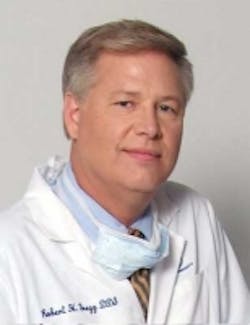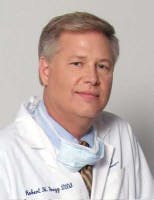Plasticity in stem cells -- a valuable property for the future of medicine
By Gregory Chotkowski, DMDYou can’t open a newspaper or watch TV without hearing about the incredible advancements in stem cell research, therapies, and applications. Today, this is made possible because of one of stem cells’ most valuable traits, their “plasticity,” — their ability to turn into specific tissues in addition to those from which they are derived. It’s this unique property that is helping transform medicine and dentistry, and shaping the future of regenerative medicine. Aging is a degenerative process, and as we get older we lose the ability to naturally repair injured or damaged tissues. Stem cells are master cells found throughout our bodies and are responsible for repairing these tissues. Today, dentists in many countries are recovering these valuable stem cells from teeth. Around the world, researchers are recognizing the plasticity of stem cells and devising ways to control and direct them into many different types of cells and tissues. These cells are then being used to repair damaged and injured tissues and organs. This is the emerging field of regenerative medicine, and it will revolutionize the practice of medicine and dentistry. Utilizing the body’s own repair and maintenance mechanisms, regenerative medicine holds the realistic promise of creating a new paradigm — away from the current “mitigation” approach to treating disease and trauma — to one focused on curing disease and rebuilding damaged tissues and organs. There are many opportunities to recover stem cells from teeth, but the earlier they are recovered, the more potential they will have for future regenerative therapies. The stem cells recovered from teeth have proved to be very plastic, and they are being introduced into clinical trials. In Italy researchers recovered stem cells from erupted third molars, expanded these cells in the laboratory, and then reintroduced these stem cells into the same individual from whom they were recovered to repair bone defects in the mandible. In Australia researchers are currently utilizing dental stem cells as a means to treat brain injuries and Alzheimer’s disease. They are observing positive therapeutic results in mice and hope to begin clinical trials using dental stem cells in humans within the next five years. In Japan researchers have differentiated dental stem cells into hepatocytes that might one day be used to treat liver disease. Out of Brazil come published reports that researchers have used dental stem cells to treat dogs with muscular dystrophy. And in Spain researchers are using dental stem cells to treat cardiac disease in animals.One day, these successful therapies will be applied to humans.Regenerative medicineRegenerative medicine is based on three things: stem cells or the raw materials; the extrinsic or intrinsic factors, which tell the stem cells what type of tissue to become; and natural or manufactured scaffolds, which define the shape of growing tissue. There are several approaches to regenerative medicine. One is in vivo, to introduce extrinsic factors and scaffolds that will home the body’s own natural stem cells to the site of injury. In the body, or in vivo, plasticity is not thought to occur on its own. The stem cells are recruited locally and generally from the type of tissue that they are found in. In degenerative diseases, the local stem cells do not have the capacity to produce enough progenitor cells to repair the damaged tissue. One of many future solutions is to introduce tissue-specific stem cells to repair these compromised tissues and organs. This will require an accessible source of stem cells that can be programmed into the specific tissue type needed to be repaired. The best cells to use would be an individual’s own stem cells, cells that would be recognized as self and would not be rejected or require the individual to take immunosuppressive medications.AccessibilityDental stem cells are proving to be an accessible source of stem cells that have the plasticity to turn into varied types of tissues. Researchers have differentiated dental stem cells in their laboratories into progenitor cells that can produce bone, cartilage, adipose, nervous tissue, muscle, hair, and insulin just to name a few. They have designed tissue-specific “cocktails” which are introduced into the culture medium, directing the stem cells into the desired tissue type. The dental stem cells are recovered from recently extracted healthy teeth, notably deciduous teeth, developing third molars, and other permanent teeth. Every child will have 20 primary teeth replaced by permanent teeth. In the United States alone, more than 10 million wisdom teeth are being removed and discarded as medical waste on a yearly basis. There are numerous research articles published from around the world that characterize the stem cells recovered from the different types of teeth. Stem cells recovered from deciduous teeth are immature stem cells that have different characteristics from stem cells recovered from permanent teeth. Deciduous teeth are ectomesenchymal in origin that begin formation at six weeks in utero. They have been shown to contain markers for factors that are found in embryonic stem cells. These factors are responsible for maintaining the “stemness” of these cells, or the ability to replicate indefinitely in vitro or outside of the body. Unique propertiesThe proprieties of stem cells recovered from the pulp of deciduous teeth are different from those found in permanent teeth and have been labeled SHED cells for Stem cells from Human Exfoliated Deciduous teeth. SHED cells have also been shown to be more proliferative than bone marrow stem cells. When grown in culture, the SHED cells expand faster and for a longer period of time, generating a larger quantity of cells when compared to bone marrow stem cells.Stem cells from developing third molars and other developing permanent teeth, e.g. bicuspids removed for orthodontic indications, are also very proliferative. The stage of development of these teeth will determine the potential for these stem cells. A wisdom tooth starts its development around the age of 4 years and begins calcification at the age of 7. The wisdom tooth is considered an organ; it includes nerves, blood vessels, ligaments, bone, enamel, dentin, and cementum. The development of the wisdom tooth starts at the bud stage where it is a collection of undifferentiated mesenchymal stem cells. TimingThere are different schools of thought on when best to remove wisdom teeth. Removing a wisdom tooth at an earlier stage of development through a germectomy or tooth bud abortion will provide access to a tremendous quantity of pluripotential stem cells that display embryonic stem cell markers. As the wisdom tooth develops and calcifies, there become distinct areas of stem cells that differentiate to produce specific types of tissue. Once the roots of the third molar begin to develop, there are three main areas of stem cells: the dental pulp, the periodontal ligament, and the apical follicle. When the permanent tooth is fully formed and has erupted, the stem cells are generally confined to the dental pulp. However, in situations where a tooth remains unerupted or impacted, the stem cell-containing follicle may still exist and can be recovered at the time of tooth removal. As an individual matures, the pulp chambers in teeth also decrease in size. The blood supply within the pulp is reduced as well as the quantity of accessible mesenchymal stem cells. The order of teeth which have dental stem cells with the most potential are deciduous teeth, unerupted deciduous supernumerary teeth (mesodens), developing wisdom teeth, permanent teeth with continued root development (bicuspids or other healthy developing teeth that need to be removed for orthodontic indications), and fully developed and impacted wisdom teeth along with the follicle in adolescents and young adults. Also included are the dental pulp stem cells from healthy permanent teeth in adults. Regenerative therapies are here today, and the plasticity of stem cells will mold the future of medicine and dentistry. Dental professionals are at the forefront of this emerging field. We have the opportunity to raise awareness of the benefits of stem cell research and provide our patients with the necessary information to make an informed decision on the value of preserving stem cells from healthy teeth when undergoing a planned dental procedure.
Gregory Chotkowski, DMD, president of StemSave, is an oral and maxillofacial surgeon in private practice in New York City. He is a graduate of Boston College and Tufts University School of Dental Medicine, where he received his DMD degree. He completed his residency in oral and maxillofacial surgery at Cornell University/New York Presbyterian Hospital and went on to found Oral and Maxillofacial Surgery Associates of Manhattan, P.C. Dr. Chotkowski has been an entrepreneur in multiple settings involving technology and medicine and has consulted for leading hospitals on IT infrastructure, as well as having authored several patents related to data capture. He is an advisor to Caring Technologies, which specializes in developing and providing BI Capture (“Behavior Image” video technology) and online tele-health services, including a personal health record service for the autism community called MyChildsHealthRecord.com. As the parent of a son afflicted with an as yet incurable form of muscular dystrophy, he has a profound understanding of stem cells and a passion for the promise of regenerative medical therapies. Contact Dr. Chokowski at www.stemsave.com.



